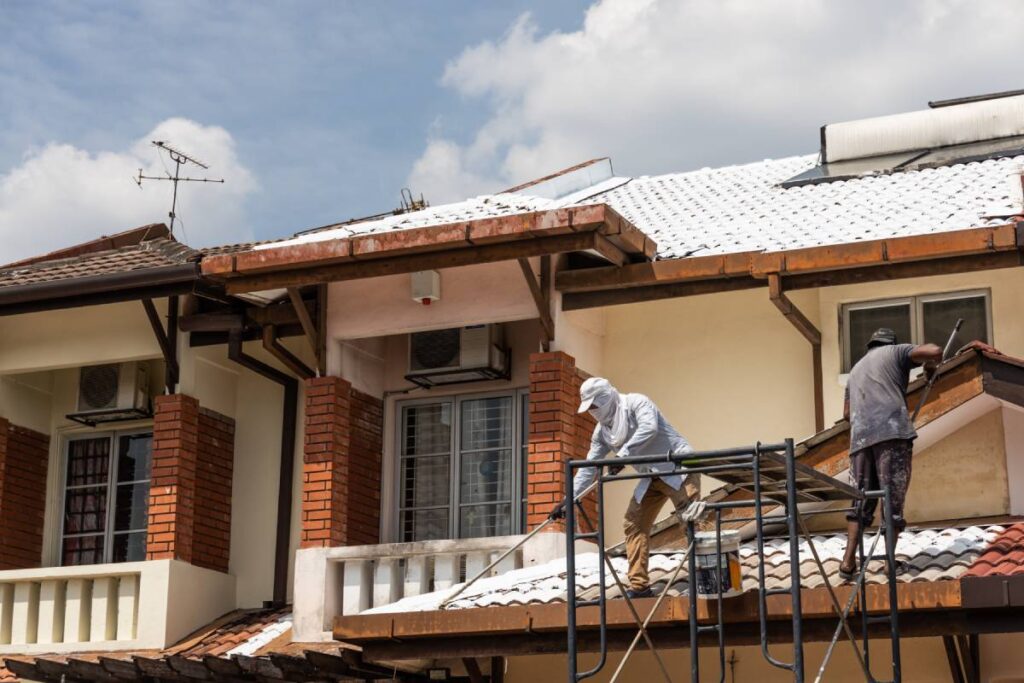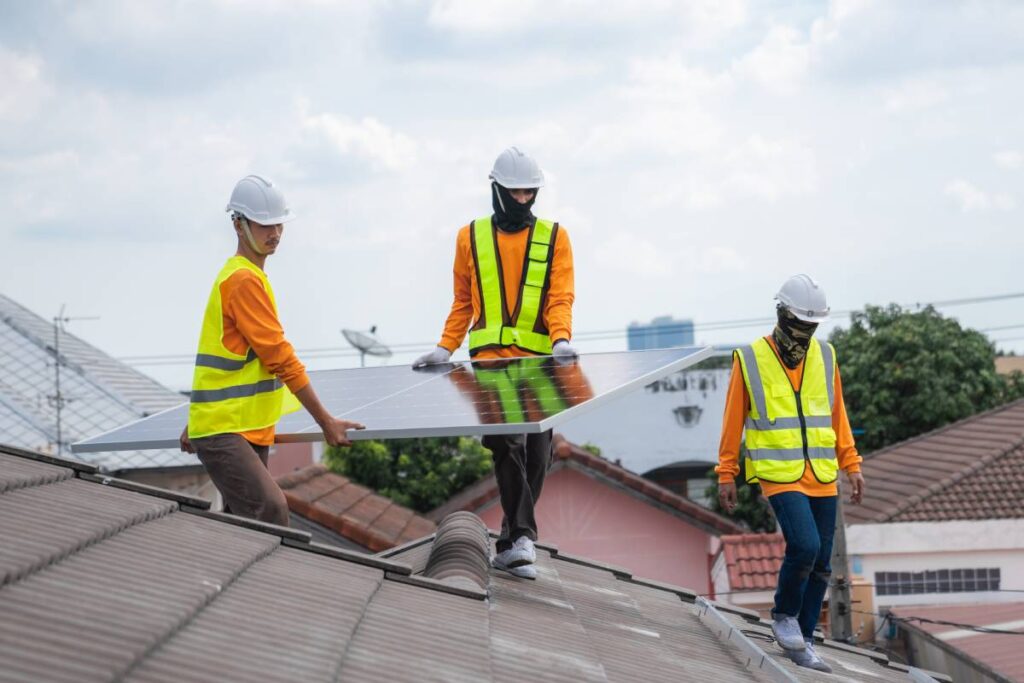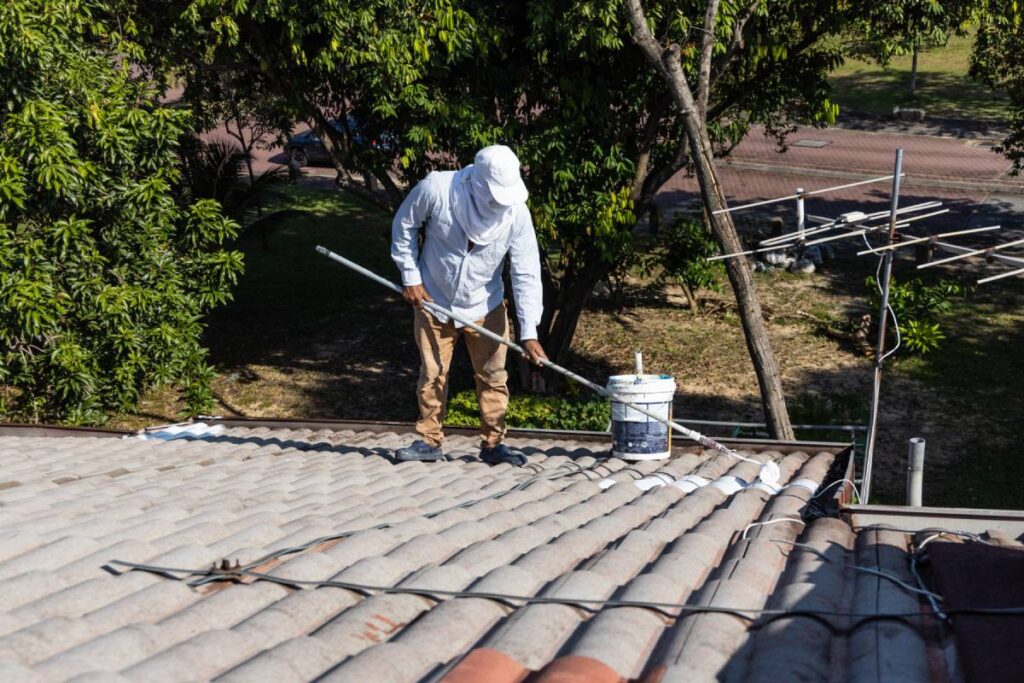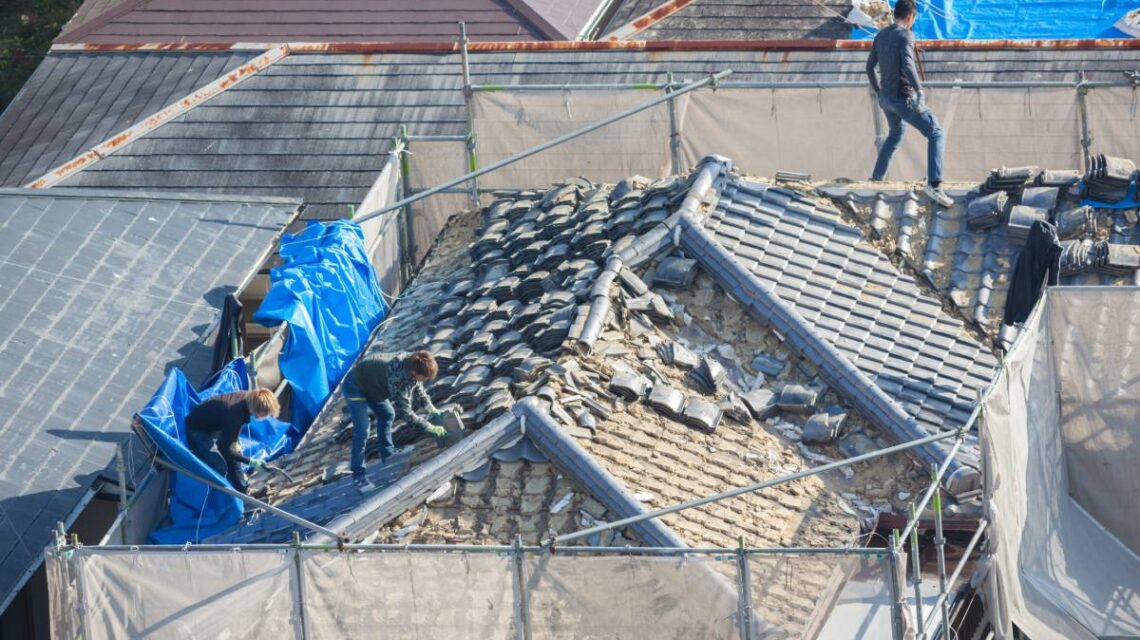Is your roof showing signs of wear and tear? If it’s leaking, fading in colour, or needing frequent repairs, it might be time for a restoration. To keep costs manageable, here are a few things to think about before starting the project.
What is a roof restoration?
So, what does roof restoration involve? It usually includes cleaning, repairing, and repainting to make your roof last longer. Compared to replacing the entire roof, restoration is often cheaper.
Restoration differs from repair and replacement. Repairs are usually less expensive, dealing with specific issues like fixing a leak. Replacement is the priciest, involving tearing off the old roof and installing a new one.
When do you need a roof restoration?
Roof restoration becomes necessary when your roof starts showing signs of wear and tear. It’s like giving your roof a makeover to extend its lifespan and maintain its functionality. But how do you know when it’s time for a restoration?
One of the most obvious signs is the appearance of your roof. If you notice that your roof is looking worn-out, with tiles appearing porous or losing colour, it’s likely in need of restoration. This aesthetic degradation can indicate underlying issues that need attention.

However, appearance isn’t the only indicator. Another common sign is a leaky roof. If you find water seeping through your ceiling during rainy days, it’s a clear sign that your roof’s integrity has been compromised. Ignoring leaks can lead to further damage to your property’s interior and structural components.
A deteriorating ceiling is also a red flag. Exposed plaster or protruding nails are signs that moisture has penetrated through the roof, causing damage to the ceiling. Addressing these issues promptly can prevent more extensive and costly repairs in the future.
Additionally, inspect the bedding and pointing on tiled roofs. Cracked or deteriorating bedding and pointing can weaken the roof’s structure and compromise its ability to withstand harsh weather conditions. Ensuring that these elements are in good condition is essential for the long-term health of your roof.
If you’re still uncertain about whether your roof needs restoration, seeking professional advice is a smart move. Builders, building inspectors, or roof restorers can conduct a thorough inspection and provide expert opinions based on their assessment.
For certain types of roofs, such as older tiled roofs or sheet metal roofs, restoration may not always be the best option. Some older tiled roofs may have design flaws that make them less effective at keeping moisture out. In such cases, replacing the roof might be a more cost-effective solution in the long run.
Similarly, sheet metal roofs are often recommended for replacement rather than restoration. A quality replacement can last up to 40 years, whereas restoration’s longevity depends on the quality of the paint used.
When do you need a roof replacement?
- Age of the Roof: The age of your roof is one of the primary factors in determining whether it needs replacement. Most roofs have a lifespan of 20 to 25 years, depending on the materials used and environmental factors. If your roof is approaching or has exceeded this timeframe, it may be time to consider a replacement, even if there are no apparent signs of damage.
- Signs of Wear and Tear: Inspecting your roof regularly for signs of wear and tear can help you identify potential issues before they escalate. Look for cracked or missing shingles, sagging areas, and signs of water damage such as mould or rot. These are indications that your roof may need immediate attention and possibly replacement.
- Persistent Leaks: Leaks are a clear sign that your roof’s protective barrier has been compromised. While some leaks can be repaired, persistent or recurrent leaks may indicate underlying structural issues that require a full roof replacement. Ignoring leaks can lead to extensive water damage and mould growth within your home.
- Energy Efficiency Concerns: An inefficient roof can significantly impact your home’s energy efficiency. If you notice a sudden increase in your heating or cooling bills, it could be due to insufficient insulation or ventilation caused by an ageing or damaged roof. Upgrading to a new, energy-efficient roof can help lower your utility costs and improve comfort levels indoors.
- Storm Damage: Severe weather events such as storms, hurricanes, or heavy snowfalls can cause significant damage to your roof. If your roof has sustained extensive storm damage, repairs may not be sufficient to restore its integrity. In such cases, a complete roof replacement may be necessary to ensure the safety and longevity of your home.
- Visible Structural Issues: Visible structural issues like sagging or uneven areas on your roof’s surface indicate serious underlying problems. These issues could be due to weakened roof supports, rotting decking, or compromised structural integrity. A professional inspection can help determine the extent of the damage and whether a replacement is necessary.

How much does it cost to restore a roof?
Prices can vary depending on factors like the size of your house and the extent of the work. On average, for an average-sized Australian house, you might expect to pay between $4,500 to over $20,000. Roofing companies usually charge by the square meter, with prices decreasing for larger areas.
To get an accurate estimate, it’s wise to get quotes from multiple companies. Be sure to specify the work needed and describe your roof in detail. Keep in mind that material costs are rising due to inflation and supply chain issues, so comparing quotes can give you a better understanding of the current market prices.
If you have solar panels on your roof, it can complicate roof renovations. Potentially increasing the overall cost of the project. It’s common practice to remove solar panels before starting any roof renovation work and reinstall them afterwards. This additional step can add anywhere from $700 to $2,000 to the total quote.
It’s important to consider how the roof restoration process might affect any warranties or insurance coverage you have for your solar panels. Some warranties stipulate that only certified installers can remove and reinstall the panels, which could impact your coverage. Additionally, it’s a good idea to inquire with your roofing company about their insurance coverage and protocols in the event of accidental damage to your solar panels by their workers.
How long does a roof restoration take?

The duration of a roof restoration project can vary depending on several factors, including the size and complexity of the roof, the extent of the damage, weather conditions, and the availability of materials and labour. On average, a roof restoration can take anywhere from a few days to a couple of weeks to complete.
For smaller roofs or those requiring minor repairs and maintenance, the restoration process may be relatively quick and could be completed within a few days. However, larger roofs or those with extensive damage may require more time for thorough inspection, repairs, and restoration work.
Additionally, weather conditions can affect the timeline of a roof restoration project. Inclement weather such as rain, snow, or high winds may delay work and extend the overall duration of the project. Contractors may need to schedule work around favourable weather conditions to ensure the safety of workers and the quality of the restoration.
It’s essential to discuss the timeline and expected duration of the project with your roofing contractor before the work begins. They can provide you with a more accurate estimate based on the specific details of your roof and the scope of the restoration work required. By understanding the factors that can influence the timeline, you can better plan for the duration of the project and minimize any disruptions to your daily routine.
How long does a roof restoration last?
The longevity of a roof restoration largely depends on several factors, including the quality of materials used, the expertise of the contractor, environmental conditions, and regular maintenance. On average, a well-executed roof restoration can last anywhere from 10 to 20 years or more.
High-quality materials, such as durable sealants, coatings, and roofing materials, can significantly extend the lifespan of a roof restoration. Additionally, hiring experienced and reputable contractors who adhere to industry best practices can ensure that the restoration is performed to the highest standards, further enhancing its durability and longevity.
Environmental factors, such as exposure to sunlight, rain, wind, and temperature fluctuations, can also impact the lifespan of a roof restoration. Properly installed and maintained roofs are better equipped to withstand these elements and last longer.
Regular maintenance is essential for preserving the integrity of a restored roof and maximizing its lifespan. This includes periodic inspections, cleaning gutters and drains, removing debris, and promptly addressing any signs of damage or wear.



